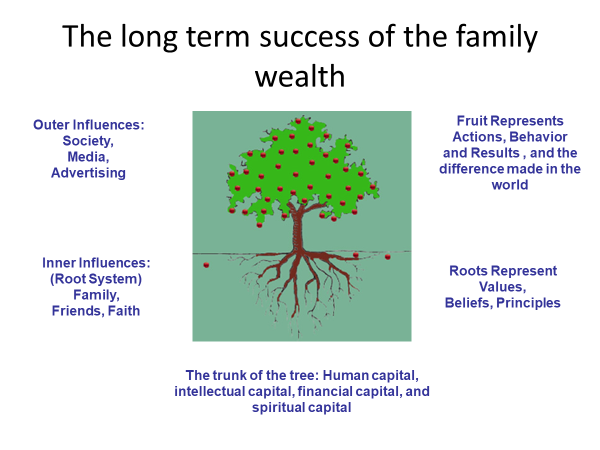 When you run your own business, oftentimes one of the most confusing aspects of the job, especially if you are new to the experience, is understanding how to separate yourself from your business. And this issue can show up in so many ways, from achieving a work/life balance and managing your time to how you get paid and even how much taxes you owe.
When you run your own business, oftentimes one of the most confusing aspects of the job, especially if you are new to the experience, is understanding how to separate yourself from your business. And this issue can show up in so many ways, from achieving a work/life balance and managing your time to how you get paid and even how much taxes you owe.
With this in mind, here we will offer a big-picture overview of this issue, and in future articles, we’ll drill down to some of the finer details of keeping your business and personal assets separate. Although it might not seem overly complicated or important, separating yourself from your business is a serious issue for every business owner.
You & Your Business Are Separate Entities
The first thing to keep in mind is this: you are not your business, you are not your heart project, your are not your work in the world or even the services you offer. Your business, heart project, work, service, and/or product may feel like it’s one and the same as you, or even as if it’s your baby. But one day, just like the little ones you give birth to, you may want your business to grow up and go on to live on its own without you. Or you may not want that—it’s all a matter of preference, and your decision on this point may even evolve over time.
Either way, this is a good thing to start thinking about now. Do you want what you are creating to live beyond you? If so, you’ll need to start thinking about it as an evolutionary entity that can grow separate from you. And whether you want it to live on beyond you or not, you want it to exist separately from you, because as you’ll learn, there are major tax and asset protection benefits for you by doing this properly.
Owning A Business vs. Being An Employee
To add perspective, let’s contrast what it’s like to run your own business with what happens when you are working as an employee.
The Employee Experience:
As an employee, you get paid via a paycheck, with taxes taken out and a W-2 issued to you at the end of the year. In this case, you and your money-earning vehicle are essentially one and the same.
You earn money, and you pay taxes on that money in the form of income taxes and payroll taxes. As an employee, what comes to you every pay period via your paycheck is yours to put into your personal financial accounts, so you can pay your bills, save, or invest. In that context, you are getting taxed on every dollar you earn.
There are some ways that you can save money tax free as an employee, such as by directing some of your pay into a 401(k), an IRA, or even a Health Savings Account, provided your employer offers such benefits. But for the most part, you are paying payroll taxes and income taxes—which are two separate types of taxes—on every dollar you make.
The Business Owner Experience:
In contrast, when you are earning money through a business entity that is under your control, money comes into your business, goes into your business accounts, and is first used to pay business expenses, which are deductible expenses to your business. When you deduct business expenses from the income of your business, you do not pay income taxes on that income. In this way, you can think of business expenses as a government-subsidized expenditure.
Here’s what I mean: if you can purchase a computer through your business and use it for business, you are paying for that computer with pre-tax dollars, which could save you up to 40% (or more depending on your state) on the cost of the computer, versus if you were to purchase that same computer with after-tax dollars. But this only works if you treat your business like a business, and properly separate your personal and business accounts.
To keep your business and personal expenses separate, your business entity needs its own bank account, its own credit cards, and it needs to pay you. You then always pay your personal expenses out of your personal accounts, never your business accounts. Whatever your business pays you will be subject to income tax and possibly payroll tax as well, though there are ways to significantly reduce your payroll tax obligation by choosing the right way to structure your business entity. Be sure to talk with us regarding how to structure your business for maximum tax savings, if you have not already gotten great guidance on that front.
To the extent that your business earns more money than what’s required to cover your basic needs, you may want to consider investing to hire experienced support staff (especially a skilled bookkeeper and administrative support) to free up your time and allow you to focus on generating more revenue, better serving your clients or customers, and growing your operation. Or you may choose to invest that money in additional education or training for yourself, so you can increase the value (and price) of your services. If you have excess cash flow, you’ll also want to know how to structure your profits, so you pay the smallest amount in taxes legally possible.
Don’t Mix Personal & Business Finances
Whatever you do, do not simply have one bank account that you pay both your personal and business expenses from, or you are going to get seriously confused, and you could even end up losing money or getting into legal or tax trouble, depending on your company’s entity structure.
If you have already paid business expenses out of a personal account, or by using personal credit cards, keep careful track and document exactly how much you paid out from those accounts to your business. This payment will either be an investment in your business that you will want to track for the future, or it will be a personal loan to your business that you will want to eventually have paid back.
Talk with your CPA regarding how best to structure investments in or as loans to your business, and then we can help you properly document your decisions. Or if you need strategic support on this issue, contact us, and ask about a LIFT Business Breakthrough Session, and we’ll look at all of your legal, insurance, financial, and tax strategic decisions together.
When you work with us, as your Family Business Lawyer™, we offer a number of systems and processes that make keeping your personal and business finances separate a snap. Not only that, but we offer additional services that make separating yourself from your business as easy and convenient as possible. Reach out to us to learn more.
Get Clear On Your Actual Financial Needs & Goals
One of the best ways to effectively manage your business and personal finances is to first get clear on what you need your business to pay you at a base level, so you can pay all of your bills and other personal expenses as well as meet your personal time and money goals. To get clear on this, we use a process called Money Mapping. If you haven’t worked with us on this yet, now is the time to finally get a solid understanding of how much money you actually need to reach your goals, rather than guessing or worrying about how much you need to earn to stay afloat.
We’ve Got Your Back
When it comes to separating yourself from your business and managing all of the different aspects involved with this process, you can count on us to provide you with the trusted support and guidance. With our help, you’ll learn how to do this in a way that not only ensures you are doing it right, but that actually adds value to your company and generates increased revenue. Sit down with us, your Family Business Lawyer™ to learn about all of the different ways we can support you in this area. Schedule your visit today.
This article is a service of Todd Jarvis, Family Business Lawyer™. We offer a complete spectrum of legal services for businesses and can help you make the wisest choices on how to deal with your business throughout life and in the event of your death. We also offer a LIFT Start-Up Session™ or a LIFT Audit for an ongoing business, which includes a review of all the legal, financial, and tax systems you need for your business.

 When you run your own business, oftentimes one of the most confusing aspects of the job, especially if you are new to the experience, is understanding how to separate yourself from your business. And this issue can show up in so many ways, from achieving a work/life balance and managing your time to how you get paid and even how much taxes you owe.
When you run your own business, oftentimes one of the most confusing aspects of the job, especially if you are new to the experience, is understanding how to separate yourself from your business. And this issue can show up in so many ways, from achieving a work/life balance and managing your time to how you get paid and even how much taxes you owe.

 Selling to employees requires legal agreements, specialized compensation plans and a willingness to run the company transparently. The return is a team that is committed to the long term, highly motivated, and all on the same page when it comes to growing the business.
Selling to employees requires legal agreements, specialized compensation plans and a willingness to run the company transparently. The return is a team that is committed to the long term, highly motivated, and all on the same page when it comes to growing the business.